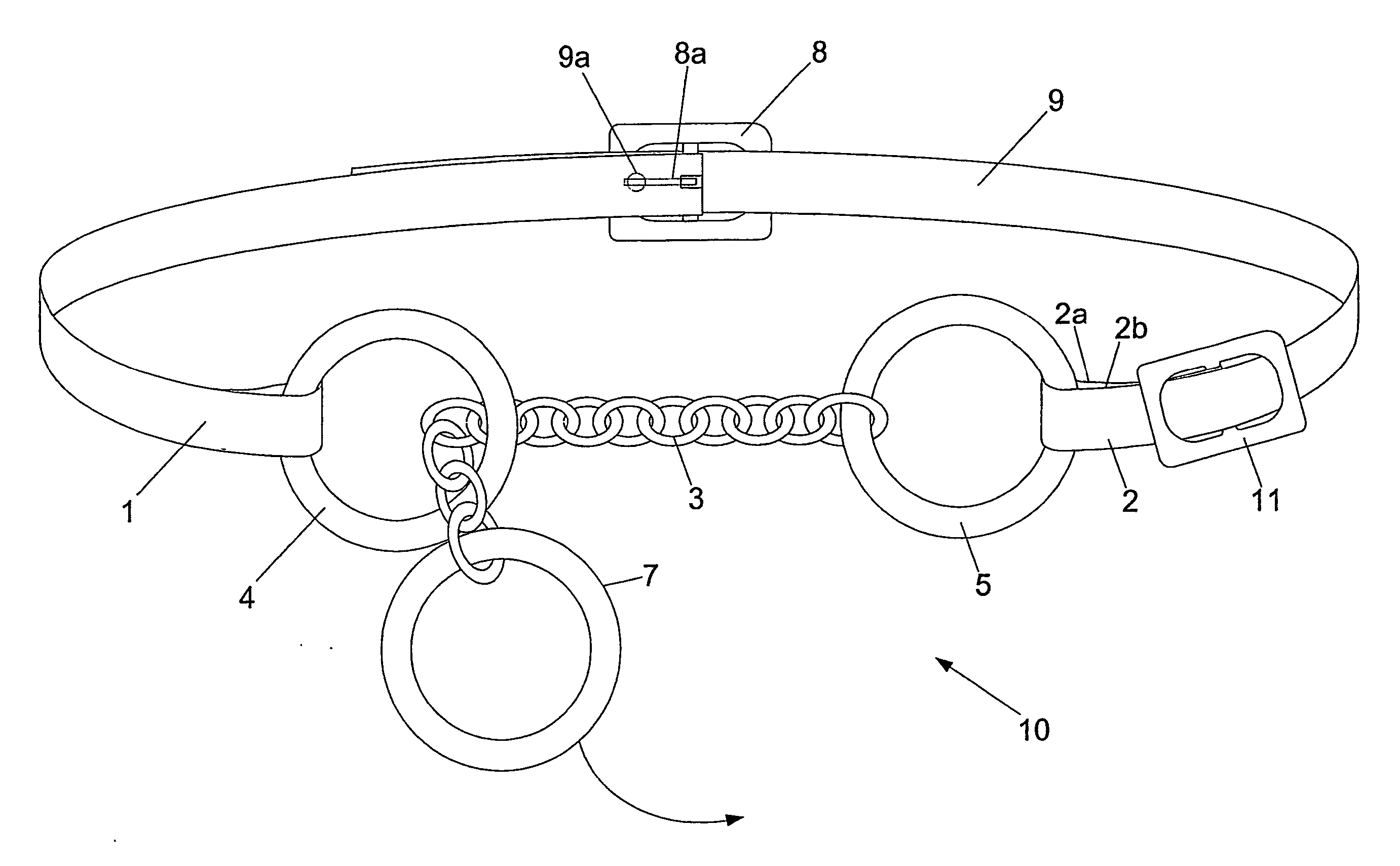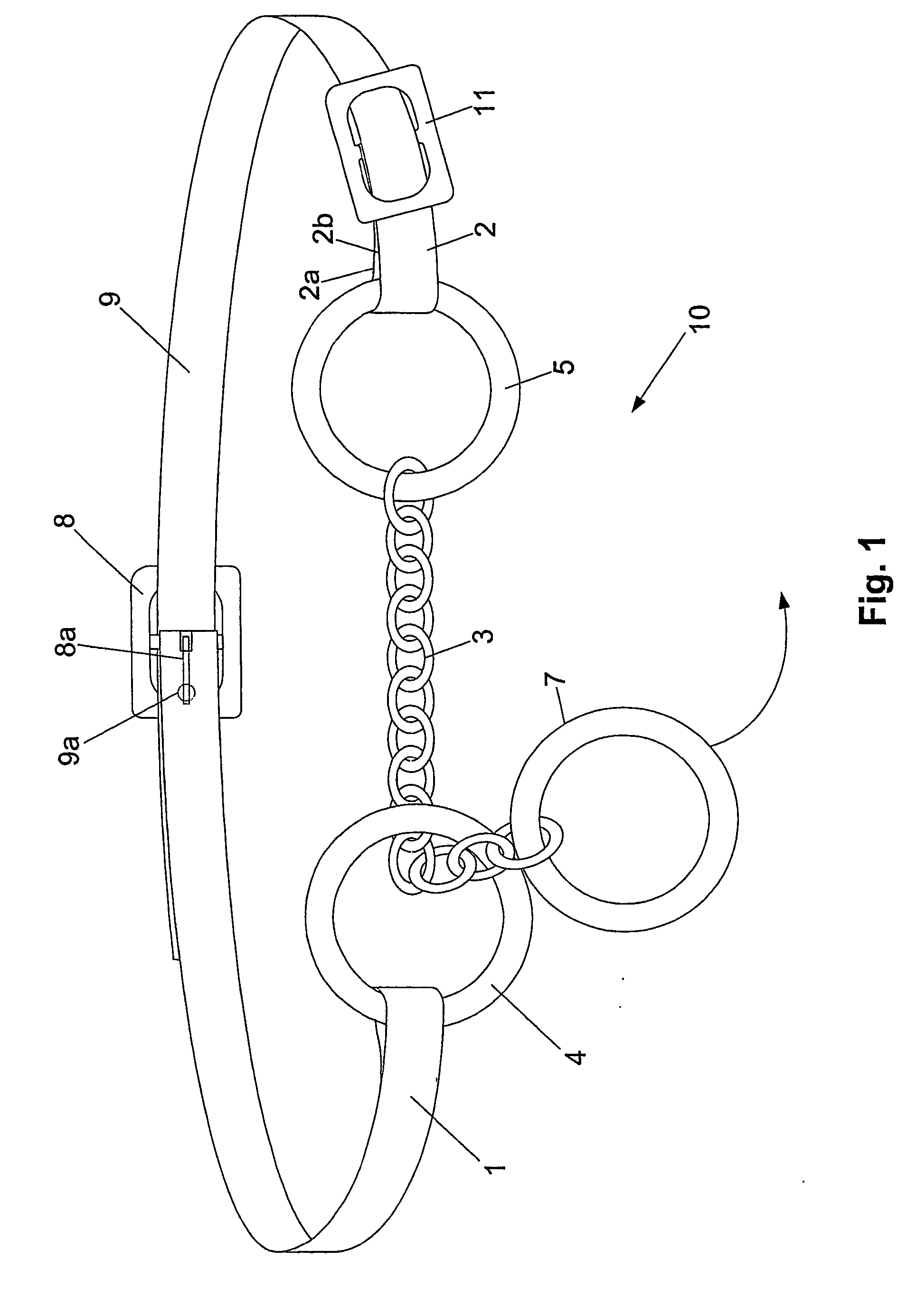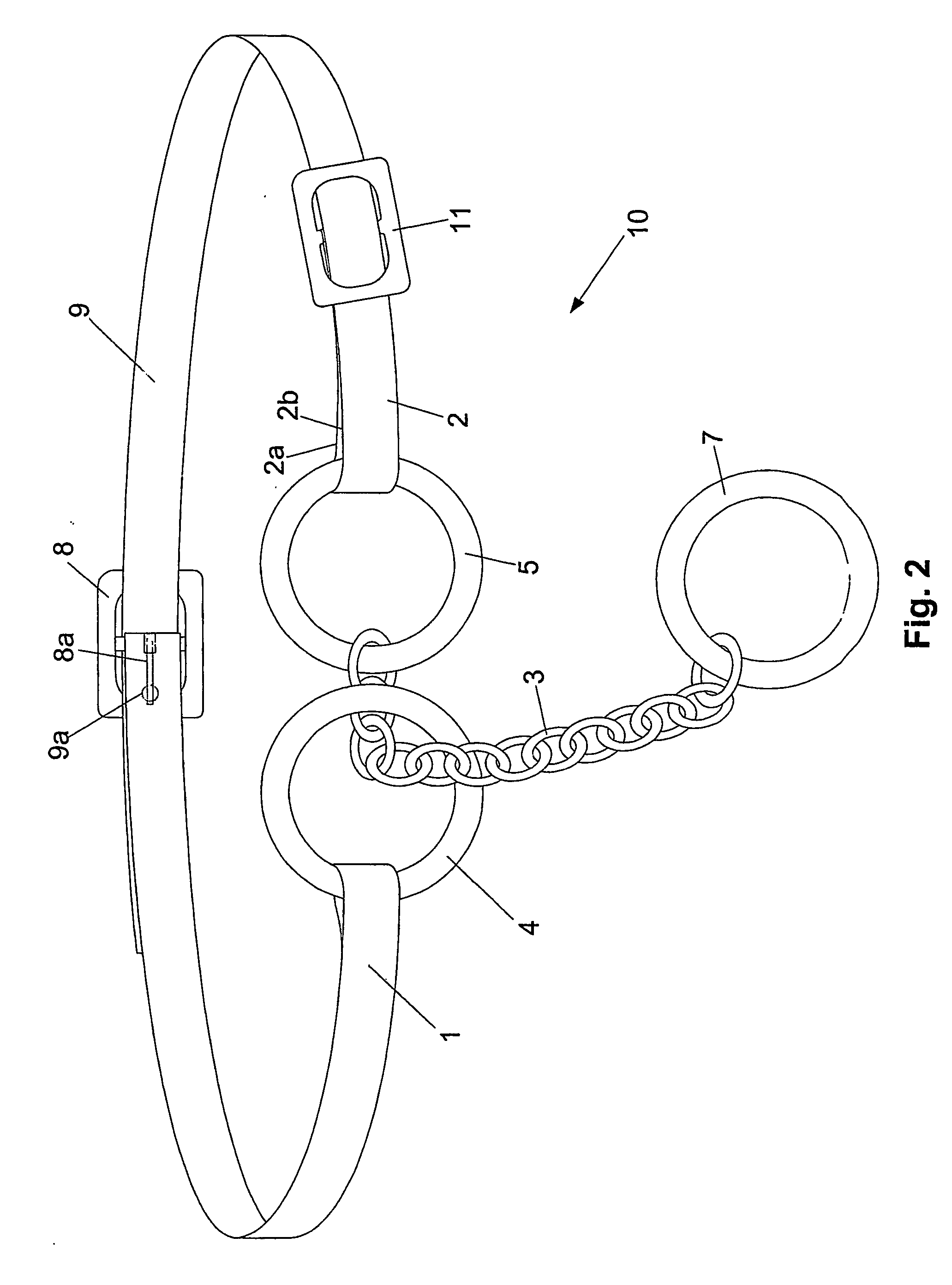Animal restraint
a technology for restraints and animals, applied in the field of restraints for animals, can solve the problems of reducing and causing pain to the dog, and achieve the effect of lengthening or shortening the girth of the restrain
- Summary
- Abstract
- Description
- Claims
- Application Information
AI Technical Summary
Benefits of technology
Problems solved by technology
Method used
Image
Examples
Embodiment Construction
[0033] An example of a restraint according to the invention will now be described with reference to FIG. 1.
[0034] As shown, the restraint 10 generally includes a belt 9 with a first belt end 1, a second belt end 2, and an elongate linker, 3. In this embodiment, the belt ends 1, 2, are affixed to respective first and second belt-end rings, 4, 5. The linker 3, is in the form of a chain, such as a twist-link chain, and is attached to the second belt end 2 by the second belt-end ring 5, and passes through an aperture provided by the first belt-end ring 4. The restraint 10 also includes a placement device in the form of a buckle 8, the buckle having a buckle tongue 8a that is placed through a hole 9a in the belt 9, for ease of placement and / or adjustment of the restraint 10, around a girth of an animal. While the present embodiment shows the belt 9 having a buckle 8, it is to be understood that placement of the restraint 10 about the girth of the animal can be performed by peripheral ad...
PUM
 Login to View More
Login to View More Abstract
Description
Claims
Application Information
 Login to View More
Login to View More - R&D
- Intellectual Property
- Life Sciences
- Materials
- Tech Scout
- Unparalleled Data Quality
- Higher Quality Content
- 60% Fewer Hallucinations
Browse by: Latest US Patents, China's latest patents, Technical Efficacy Thesaurus, Application Domain, Technology Topic, Popular Technical Reports.
© 2025 PatSnap. All rights reserved.Legal|Privacy policy|Modern Slavery Act Transparency Statement|Sitemap|About US| Contact US: help@patsnap.com



